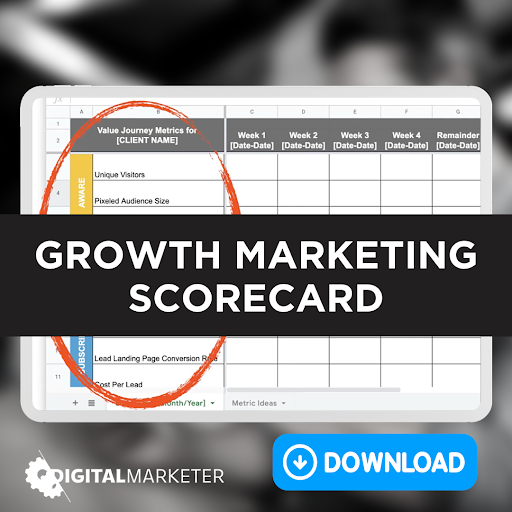In today’s digital age, businesses recognize the essential role that social media plays in their marketing campaigns. Your company is no exception. You want to ensure your social media investment effectively drives business growth and provides satisfactory results.
A pertinent question arises—how do you measure the return on investment (ROI) for your social media campaigns? The answer lies in using percentage metrics as a consistent and reliable approach to gauge your campaign success.
Table of Contents
- 1 Defining Percentage Metrics for ROI
- 2 Identifying Key Performance Indicators (KPIs)
- 3 Social Media Engagement Metrics
- 4 Click-Through and Conversion Rates
- 5 Cost Per Acquisition (CPA) Calculation
- 6 Customer Lifetime Value (LTV) Evaluation
- 7 Analyzing Sentiment and Influence Scores
- 8 Return on Ad Spend (ROAS) Measurement
- 9 Utilizing Google Analytics for ROI
- 10 A/B Testing to Optimize Campaigns
- 11 Future Opportunities: Tracking New Metrics
- 12 Conclusion
Defining Percentage Metrics for ROI
Percentage metrics allow you to efficiently evaluate the performance of your social media campaigns by measuring specific aspects of user interactions. By expressing those measurements as percentages, you facilitate direct comparison across different platforms and timescales. Additionally, using a percentage calculator app can help simplify these calculations, ensuring accuracy and ease of use.
Identifying Key Performance Indicators (KPIs)
To begin measuring the ROI of your social media campaigns, establish key performance indicators (KPIs). These determine which percentage metrics will be most relevant to your goals. KPIs should align with your overall marketing objectives, such as increased brand awareness, lead generation, or conversions.
Social Media Engagement Metrics
Engagement metrics quantify how users interact with your content on social media platforms. These metrics include likes, comments, shares, and reactions. You can calculate engagement rates by dividing the number of specific engagement actions by the total reach or impressions of a post. Average engagement rates demonstrate how well your content resonates with your audience, revealing its overall effectiveness.
Click-Through and Conversion Rates
Click-through rate (CTR) measures the ratio of users who click a specific link on your social media post compared to the total number who viewed that post. Similarly, conversion rates calculate the ratio between clicks and completed desired actions like form submissions or purchases.
Low CTRs often suggest issues with caption quality or relevancy for target audiences. High conversion rates indicate high levels of user interest, leading to successful calls to action and increased ROI.
Cost Per Acquisition (CPA) Calculation
CPA involves dividing the total cost of your social media campaigns by the number of acquired customers or leads. If you invest $500 in a campaign and achieve five sales, your CPA is $100 per sale. Results vary based on factors like industry, size, and advertising goals, but ultimately, lower CPA values lead to higher ROI.
Customer Lifetime Value (LTV) Evaluation
Calculating LTV provides valuable insight into how much revenue a customer generates throughout their relationship with your company. Understandably, longer customer relationships tend to yield higher income. Assessing LTV allows you to compare various customer segments against the cost of acquiring them through your social media campaigns. This comparison is crucial in evaluating long-term profitability and ROI achieved through social media marketing.
Analyzing Sentiment and Influence Scores
Sentiment analysis monitors positive, negative, or neutral feelings surrounding a brand or campaign across platforms. Higher positive sentiment scores prove greater satisfaction among consumers overall. Influence scores then measure impact—higher scores mean more engagement and a larger audience network, indicating successful brand influence. Analyzing sentiment and influence helps fine-tune your messaging for optimal results.
Return on Ad Spend (ROAS) Measurement
ROAS evaluates the efficiency of your social media advertising investments by calculating the total amount of revenue generated for every dollar spent on ads. Achieving higher ROAS signifies better-targeted advertisements, maximizing ad spends, and attaining increased ROI.
Utilizing Google Analytics for ROI
Google Analytics is an indispensable tool when measuring social media campaign success. By monitoring website traffic and assisted conversions originating from various platforms, you can accurately evaluate which channels drive the best online performance.
A/B Testing to Optimize Campaigns
A smart marketer like yourself can analyze percentage metric trends and make data-driven decisions to optimize campaigns using A/B testing. This process involves creating sample variations in targeting methodologies, content types, or messaging to find winning formulas that result in improved metrics.
To illustrate its effectiveness, one case study by Buffer demonstrated how the company utilized A/B testing on their Facebook ad campaign to refine their targeting model. They discovered that 30-second explainer videos outperformed other formats significantly, resulting in considerable improvements in lowering CPC rates and boosting traffic generation from remarketing campaigns.
Future Opportunities: Tracking New Metrics
As marketing technologies make strides in providing real-time access to more advanced data points, tracking new metrics can help you better understand user behaviors and customer journeys. Keep an eye out for emerging percent-based measurements applicable to your goals—remaining adaptable ensures a continued ability to measure the ROI of your social media efforts successfully.
Conclusion
Ultimately, effectively measuring ROI in social media campaigns with percentage metrics is an essential contributor to your overall marketing success. By diligently monitoring essential performance indicators such as engagement rates, CTRs, CPA values, LTV evaluations, reach metrics, sentiment scores, ROAS measurements—and utilizing tools like a percentage calculator app—you can empower your business with data-driven insights and make informed decisions that lead to higher ROI and user satisfaction.
The post Measuring ROI in Social Media Campaigns with Percentage Metrics appeared first on Enterprise Podcast Network – EPN.





Leave a Reply